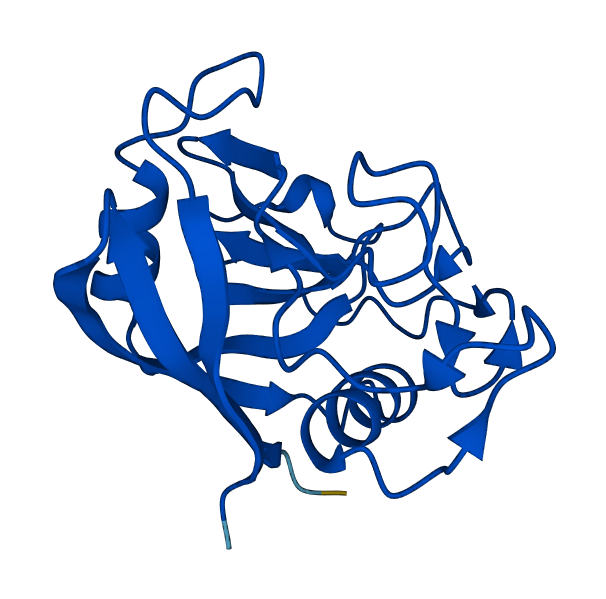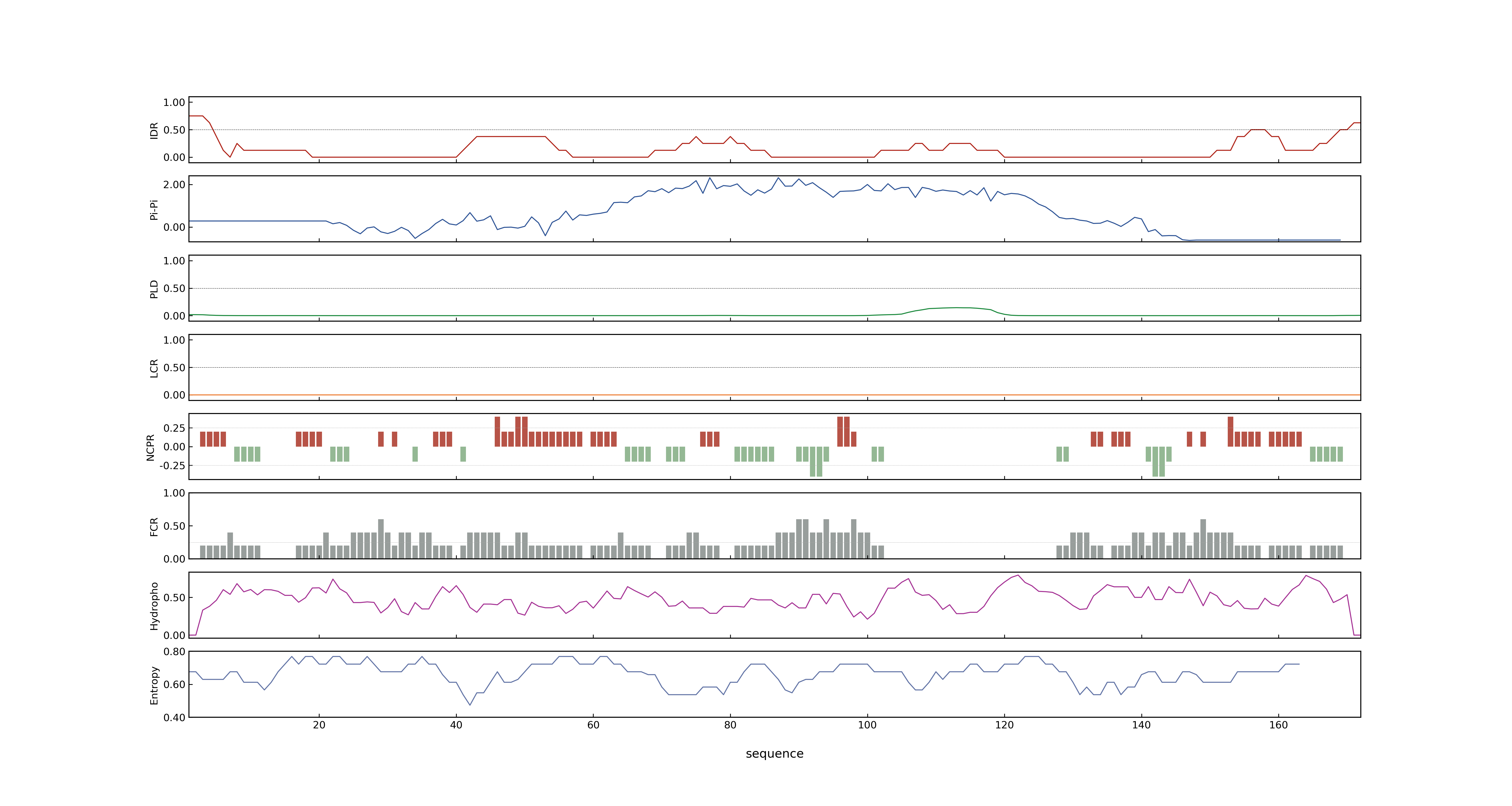- Information
- Symbol: OsCYP2,OsCyp2-P,LRT2
- MSU: LOC_Os02g02890
- RAPdb: Os02g0121300
- PSP score
- LOC_Os02g02890.1: 0.0812
- PLAAC score
- LOC_Os02g02890.1: 0
- pLDDT score
- 97.78
- Protein Structure from AlphaFold and UniProt
- MolPhase score
- LOC_Os02g02890.1: 0.01035025
- MolPhase Result
- Publication
- LATERAL ROOTLESS2, a cyclophilin protein, regulates lateral root initiation and auxin signaling pathway in rice, 2013, Mol Plant.
- OsCYP2, a chaperone involved in degradation of auxin-responsive proteins, plays crucial roles in rice lateral root initiation, 2013, Plant J.
- Heterologous expression of a salinity and developmentally regulated rice cyclophilin gene OsCyp2 in E. coli and S. cerevisiae confers tolerance towards multiple abiotic stresses, 2009, Mol Biotechnol.
- Proteomic identification of OsCYP2, a rice cyclophilin that confers salt tolerance in rice Oryza sativa L. seedlings when overexpressed, 2011, BMC Plant Biol.
- Expression of a cyclophilin OsCyp2-P isolated from a salt-tolerant landrace of rice in tobacco alleviates stress via ion homeostasis and limiting ROS accumulation., 2014, Funct Integr Genomics.
- Peptidyl-prolyl isomerization targets rice Aux/IAAs for proteasomal degradation during auxin signalling., 2015, Nat Commun.
- A zinc finger protein, interacted with cyclophilin, affects root development via IAA pathway in rice., 2017, J Integr Plant Biol.
- Genbank accession number
- Key message
- OsCYP2, a chaperone involved in degradation of auxin-responsive proteins, plays crucial roles in rice lateral root initiation
- Proteomic identification of OsCYP2, a rice cyclophilin that confers salt tolerance in rice (Oryza sativa L.) seedlings when overexpressed
- Heterologous expression of a salinity and developmentally regulated rice cyclophilin gene (OsCyp2) in E. coli and S. cerevisiae confers tolerance towards multiple abiotic stresses
- Our results suggest that OsCYP2 participates in auxin signal transduction by interacting with OsSGT1
- Expression of OsCyp2 enhances the ability of Escherichia coli to survive under diverse abiotic stresses viz
- Based on these results, we propose that OsCyp2 may serve as a ‘suitable candidate’ for raising transgenic plants for enhanced multiple abiotic stress tolerance
- OsCyp2 was able to complement the yeast mutant lacking native Cyp2 and also improved the growth of wild type yeast under above-mentioned stress conditions
- Ectopic expression of OsCyp2-P imparted multiple abiotic stress tolerance to transgenic tobacco plants as evidenced by higher root length, shoot length, chlorophyll content, and K(+)/Na(+) ratio under stress conditions
- Expression of a cyclophilin OsCyp2-P isolated from a salt-tolerant landrace of rice in tobacco alleviates stress via ion homeostasis and limiting ROS accumulation.
- OsCyp2-P operates via reactive oxygen species (ROS) scavenging and ion homeostasis and thus is a promising candidate gene for enhancing multiple abiotic stress tolerance in crop plants
- The overall results suggest the explicit role of OsCyp2-P in bestowing multiple abiotic stress tolerance at the whole plant level
- Publicly available massively parallel signature sequencing (MPSS) and microarray data, besides our quantitative real time PCR (qRT-PCR) data suggest that transcript abundance of OsCyp2-P is regulated under different stress conditions in a developmental and organ specific manner
- Moreover, knockdown of the OsIAA11 expression partially rescues the lrt2 mutant phenotype in lateral root development
- To better understand the molecular mechanisms underlying lateral root formation, an auxin-responsive gene OsCYP2 (Os02g0121300) was characterized from rice
- T2 OsZFP-RNAi lines had significantly fewer lateral roots than did wild-type plants, which suggests a role for OsCYP2 and OsZFP in regulating lateral root development
- These findings imply that OsCYP2 and OsZFP participate in IAA signal pathways controlling lateral root development
- Yeast two-hybrid and glutathione S-transferase pull-down results confirmed that OsCYP2 interacted with a C2HC-type zinc finger protein (OsZFP, Os01g0252900) which is located in the rice nucleus
- Connection
- OsCYP2~OsCyp2-P~LRT2, OsIAA11, Peptidyl-prolyl isomerization targets rice Aux/IAAs for proteasomal degradation during auxin signalling., Here we show that peptidyl-prolyl isomerization of rice OsIAA11 catalysed by LATERAL ROOTLESS2 (LRT2), a cyclophilin-type peptidyl-prolyl cis/trans isomerase, directly regulates the stability of OsIAA11
- OsCYP2~OsCyp2-P~LRT2, OsIAA11, Peptidyl-prolyl isomerization targets rice Aux/IAAs for proteasomal degradation during auxin signalling., NMR spectroscopy reveals that LRT2 efficiently catalyses the cis/trans isomerization of OsIAA11
- OsCYP2~OsCyp2-P~LRT2, OsIAA11, Peptidyl-prolyl isomerization targets rice Aux/IAAs for proteasomal degradation during auxin signalling., The lrt2 mutation reduces OsTIR1-OsIAA11 interaction and consequently causes the accumulation of a higher level of OsIAA11 protein
- OsCYP2~OsCyp2-P~LRT2, OsIAA11, Peptidyl-prolyl isomerization targets rice Aux/IAAs for proteasomal degradation during auxin signalling., Moreover, knockdown of the OsIAA11 expression partially rescues the lrt2 mutant phenotype in lateral root development
- OsCYP2~OsCyp2-P~LRT2, OsTIR1, Peptidyl-prolyl isomerization targets rice Aux/IAAs for proteasomal degradation during auxin signalling, The lrt2 mutation reduces OsTIR1-OsIAA11 interaction and consequently causes the accumulation of a higher level of OsIAA11 protein.
- OsCYP2~OsCyp2-P~LRT2, OsZFP, A zinc finger protein, interacted with cyclophilin, affects root development via IAA pathway in rice., Yeast two-hybrid and GST pull-down results confirmed that OsCYP2 interacted with a C2HC-type zinc finger protein (OsZFP, Os01g0252900) which is located in the rice nucleus
- OsCYP2~OsCyp2-P~LRT2, OsZFP, A zinc finger protein, interacted with cyclophilin, affects root development via IAA pathway in rice., T2 OsZFP-RNAi lines had significantly fewer lateral roots than did wild type plants, which suggests a role for OsCYP2 and OsZFP in regulating lateral root development
- OsCYP2~OsCyp2-P~LRT2, OsZFP, A zinc finger protein, interacted with cyclophilin, affects root development via IAA pathway in rice., These findings imply that OsCYP2 and OsZFP participate in IAA signal pathways controlling lateral root development
- OsCYP2~OsCyp2-P~LRT2, OsZFP, A zinc finger protein, interacted with cyclophilin, affects root development via IAA pathway in rice., Yeast two-hybrid and glutathione S-transferase pull-down results confirmed that OsCYP2 interacted with a C2HC-type zinc finger protein (OsZFP, Os01g0252900) which is located in the rice nucleus
- OsCYP2~OsCyp2-P~LRT2, OsZFP, A zinc finger protein, interacted with cyclophilin, affects root development via IAA pathway in rice., T2 OsZFP-RNAi lines had significantly fewer lateral roots than did wild-type plants, which suggests a role for OsCYP2 and OsZFP in regulating lateral root development
Prev Next

